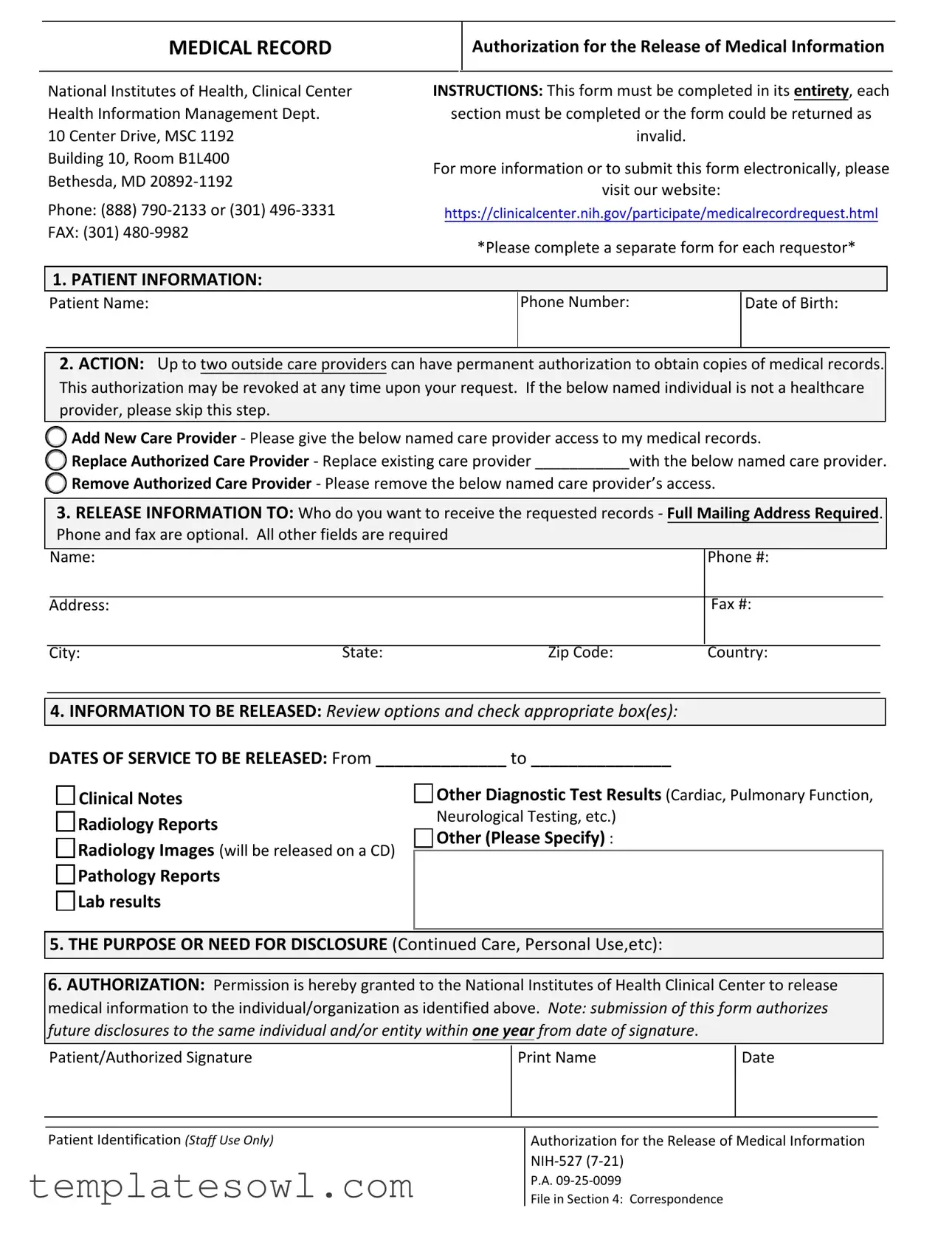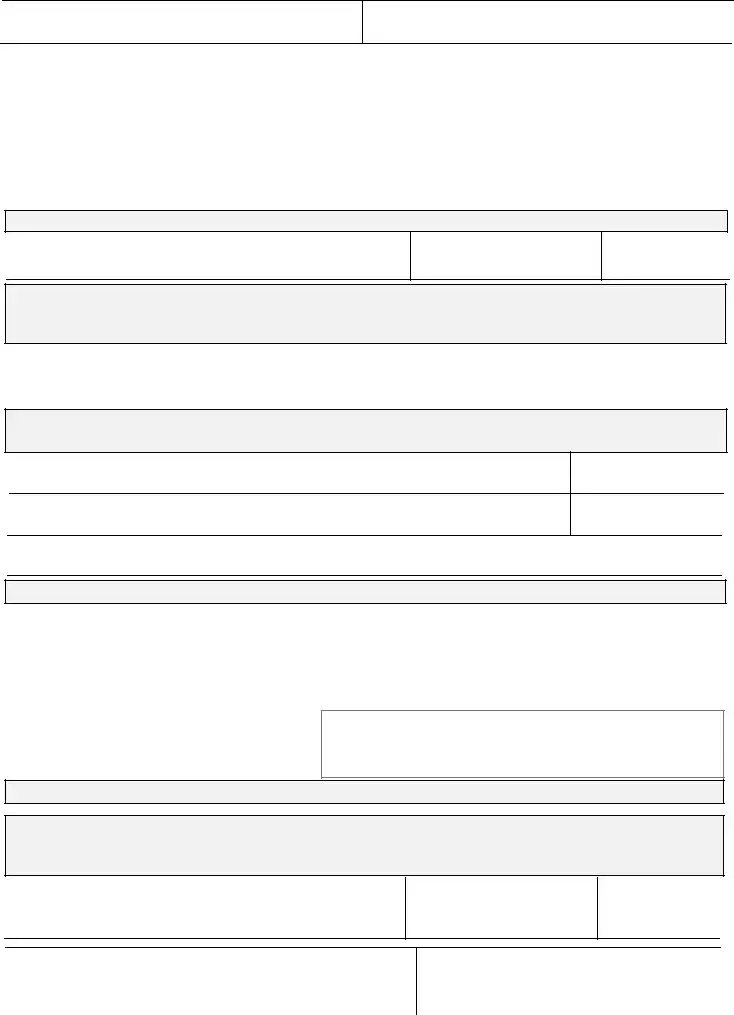What is the purpose of the NIH 527 form?
The NIH 527 form is used to authorize the release of medical information. Patients complete this form to allow specified care providers or organizations to access their medical records. It enables healthcare providers involved in a patient's care to obtain necessary information for treatment and continuity of care. Each request for release must be documented using a separate form per requestor.
How do I fill out the NIH 527 form correctly?
To fill out the NIH 527 form correctly, complete all required sections. Start by providing accurate patient information, including your name, phone number, and date of birth. Specify whether you want to add, replace, or remove an authorized care provider. Clearly state the full mailing address of the recipient and indicate the specific medical records you wish to release. Also, clarify the purpose of the release. Incomplete submissions may be returned, so ensure every section is addressed completely.
Can I revoke my authorization after submitting the NIH 527 form?
Yes, you can revoke your authorization at any time after submitting the NIH 527 form. To do so, you must provide a written request to the National Institutes of Health Clinical Center. Once your revocation is processed, the previously authorized care providers will no longer have access to your medical records. Ensure that you have confirmation of the revocation for your records.
Where can I submit the NIH 527 form?
You can submit the NIH 527 form via fax or electronically. For electronic submission, visit the National Institutes of Health Clinical Center's website. If you prefer fax, send your completed form to (301) 480-9982. You can also mail it to the address provided: 10 Center Drive, MSC 1192, Building 10, Room B1L400, Bethesda, MD 20892-1192. For any questions, you can contact the center at (888) 790-2133 or (301) 496-3331.

